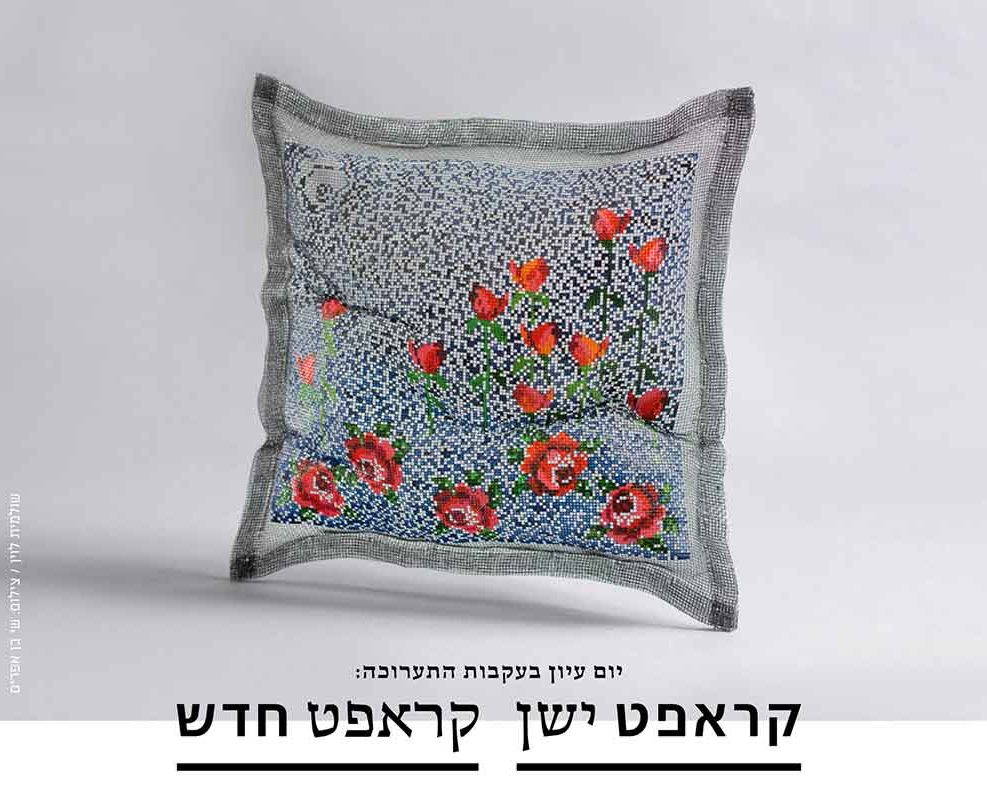Exhibition of the Israel Designer Craftsmen’s Association
Curator: Shlomit Bauman
Artists: Ruth Agmon, Batia Eichenholz, Arielle Blonder and Shira Shoval, Dalia Barkey, Adva Drori, Judith Handelzalts Nabarro, Neora Warshavsky, Mira Weinstein, Ayala Cohen, Shulamit Levin, Ami Leibowicz, Juany Mukmel, Talia Mukmel, Tamar Nissim, Ayala Tzur, Dorit Koh, Ruth Mayon Kuck, Anat Kaly Zucker (Bar David), Yonit Crystal, Ruth Shomroni, Orna Shahar
Catalogue (opens in a new page)
Craftsmen today are facing especially interesting challenges: innovative technologies and materials, the integration of digital media in all aspects of living, and the blurring of boundaries between designers-creators and makers, and between the arts and craft as we know it. All of these raise important questions regarding the pursuit of crafting: Is crafting still relevant? What can be revitalized through craftwork? What is its value? How can we create new vocabularies and terms of art in the field?
Craftsmanship – which has been viewed as an opposing force to industrialization and globalization, and consists of self-production of small series based on manual skills – has become a metaphor for humanism. The human element is attributed to the mediation between the artist and the recipient through methods of individual and unique production as opposed to generic and anonymous manufacturing processes. This perception in the post-industrial era – in which man and not a machine invests in the product of craft work – lends meaningful value to the idea of a revival of our material culture.
Thus in a world overly abundant and inundated with commodities, crafting and craftsmen have become a significant force in creating an environment which links the personal to the humane, and material to a meaningful statement. Specialization in materials and an understanding of work processes allows for the production of small series which are characteristic of creativity in today’s global economic system. In this system, local industrial manufacturing and production processes have lost their significance; moving to far-away places has made them unavailable to designers and artists. Therefore, the process of creating and producing in workshop or studio conditions, with simple and available means on the one hand and sophisticated technological skills on the other, have infused the field of crafting with a lively and fresh curiosity; these innovations have allowed the craftsman to work while maintaining complete control of materials and processes, thus leading to the expression of innovative ideas.
The exhibition “Old Craft, New Craft” is the culmination of a concerted effort among craftsmen who have been working in the field for many years and discerning the important changes taking place in their field. During meetings with the exhibitors, pointed questions arose concerning the relevancy of crafting in today’s world, the identity of those working in the field (are they artists? designers? craftsmen? all of these together?) and the challenge of crafting in a changing world. As such, the works in the exhibition are the fruit of a dialogue between me and the participants, who have placed at the center of discussion the significance of craft work in a conceptual and technological period of transition. Adopting this as a starting point, works were produced which expanded previous concepts generally associated with the field and those working in it.
This effort required addressing the subject from a relevant and inquisitive point of view, involving the meeting of traditional methods of work and materials used for weaving, basket- making, sewing, paper mâché, printing, glass blowing or embroidery with the processes and innovative thinking they employed when addressing the tension between manual wisdom and mechanical or digital procedures. Traditional crafts such as weaving, sewing and basket- making gain their importance in the exhibition by illuminating a meaningful body of knowledge, including elements with a deep historical and cultural significance, as a point of departure for contemporary expressions. These fields suggest important issues related to our physical body, to handicrafts, fiber (raw materials) and weave, and to the material culture around us; they are part of the expansion of new spheres of creativity during this fascinating period of combining the old and the new.

